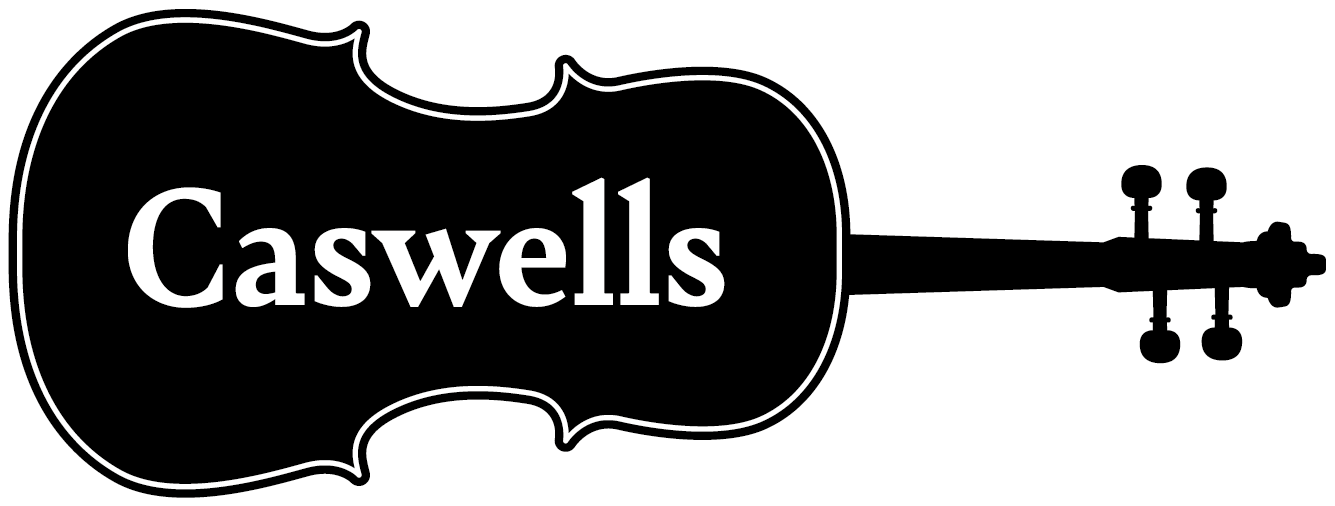Due diligence, awareness and an abundance of common sense
First and foremost, don’t leave it to chance…
Here are a few tips to help keep your cello in tip-top condition. First and foremost, common sense prevails – cellos are very easily damaged and you are the only one who is going to maximise the chances of it staying in good condition; don’t leave it propped up against a table, don’t leave it lying on a bed, don’t leave it on the floor… one such moment of neglect can result in a very expensive repair. So as a start…
1. Get yourself a stand!
A cello stand is a must. The Stohr or the Hercules stand is the most protective as they have a yoke to arrest the cello should it fall forward – something any household with pets or young children would ideally have. The cellogard is ideal if you’re taking your cello to orchestra or rehearsals but we would never recommend leaving it on the floor if just at home.
2. Keep it clean
Keeping your cello clean is important to avoid any damage to the instrument from dust or rosin build up. A dusting of rosin is no problem but it should be wiped off at least once a week. To keep the cello looking good a recognised string instrument cleaner solution (not a domestic product!) may be used but beware it doesn’t damage the surface – try it in an inconspicuous place first.
3. Pegs
The pegs on a cello are a tapered push fit. When tuning or changing strings the peg must be pushed in in a simultaneous action to turning it to ensure the tight fit remains. A peg may get too tight or, despite doing as above, it may keep slipping in which case apply some peg paste which will keep it running smoothly.
4. Fine tuning adjusters
If your cello has fine tuning adjusters or a tailpiece with integral adjusters please remember these are, as their name suggests, for ‘fine tuning’ and must not be used if the cello is far out of tune. The problem with over using the fine-tuning adjusters is they eventually end up screwed right down potentially snapping the string and so close to the cello table they can easily scratch it. If you notice this, screw them right out again and bring the string up to pitch using the pegs, only then using the adjuster to fine-tune.
5. Humidity
Humidity can be a killer, especially on older instruments. Make sure you have a hygrometer and regularly monitor the humidity to check it isn’t too dry and risk the cello cracking. This can also occur when it is cold and wet outside and the radiators are on full drying the air out. Whatever you do don’t leave a cello near a radiator or in the boot of a car.
6. Keep the bridge in place
The tension of the strings and regular tuning can cause the bridge to start leaning. You do need to keep an eye on it and if the lean becomes too much, loosening the strings slightly and make it perpendicular again. (The feet of the bridge should be between the f-holes, in line with the notches).
7. Look after your bow
Your bow is obviously an essential part of the outfit and also needs care. Once again, we would recommend a stand that has provision for a bow. Don’t over tension and always remember to slacken off the bow when you are finished playing.
8. Cello Strings
Strings do get a build-up of rosin – this is quite normal. A simple duster to keep this at bay is all you need, giving them a wipe every so often. It is recommended you change the strings approx. once a year even if they aren’t broken. This does of course depend of how much you play. Some strings will go on forever but the sound definitely deteriorates with time.
9. What about marks and scratches?
A cello is made of wood and will attract marks scratches over time, even from taking it in and out of your case: it’s virtually unavoidable, so don’t worry about it. If your cello does, however, get a nasty scratch by accident or even a crack, consult your local luthier or music shop but whatever you do, don’t try and mend it with domestic products!
10. A good case or Bag
Many of us have to from time to time take our cellos out and about – be it to lessons, to school or to orchestra. It is surprising how many very expensive cellos are put in very inferior cases. Make sure the bag or the case is or applicable standard to the quality of the instrument to afford maximum protection.




